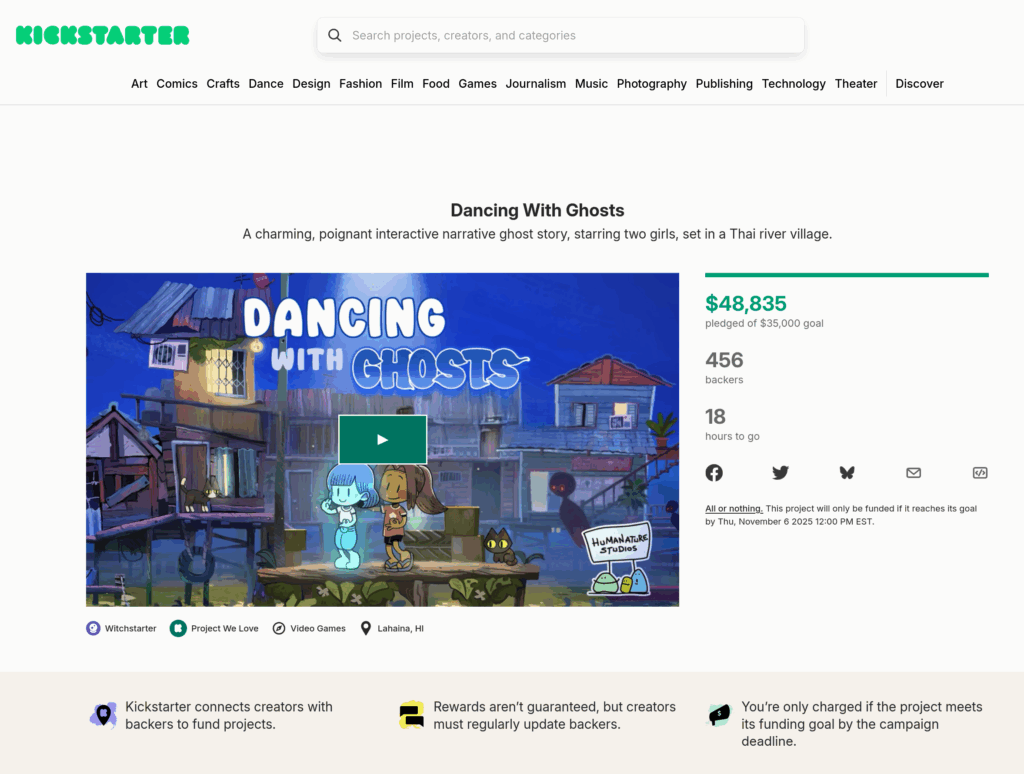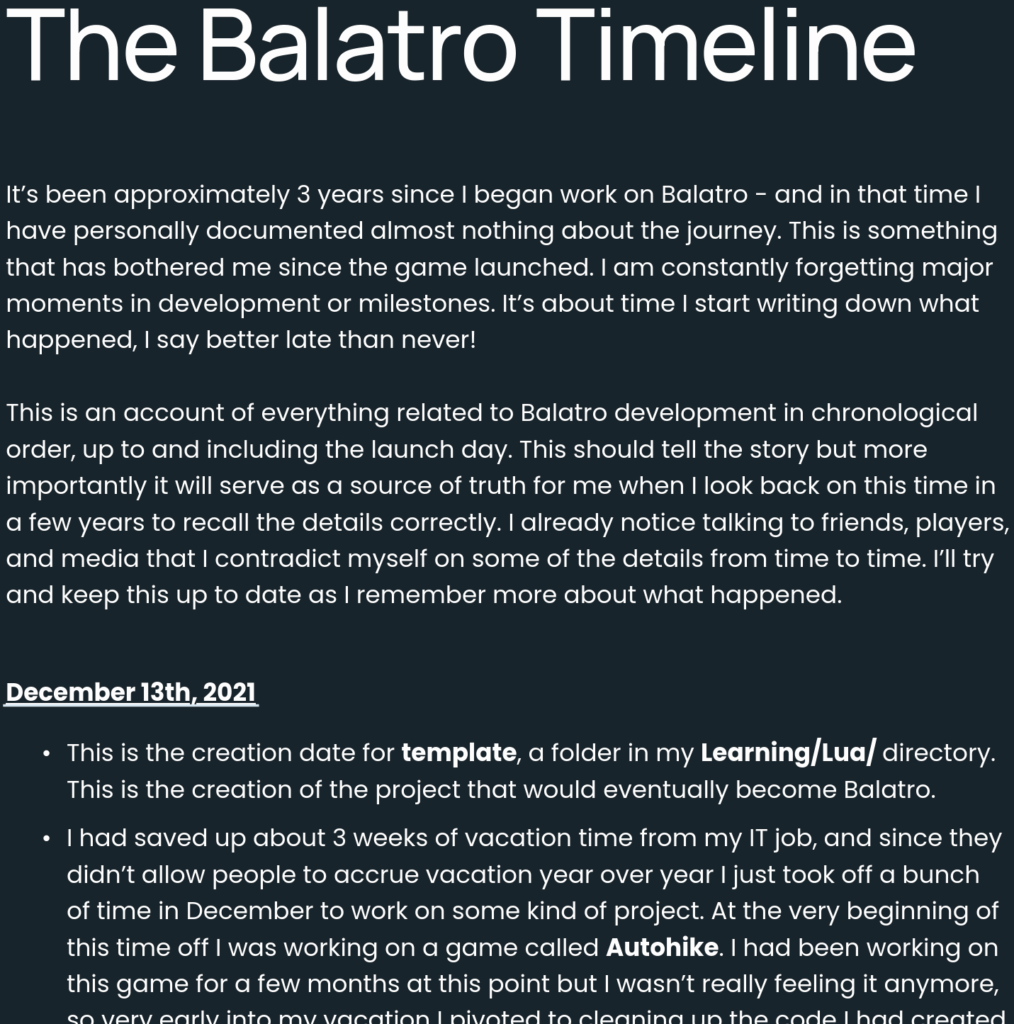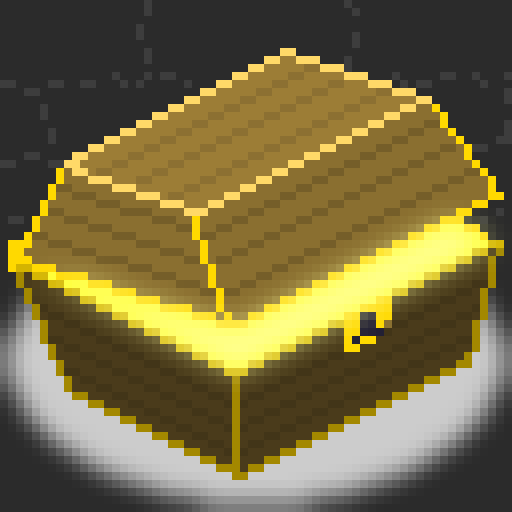Set Side B usually updates at 10 AM Eastern time every day, but this post needs to go out right now, since it only has 18 hours to go….
Dancing With Ghosts is the next production by Greg Johnson and Humanature Studios, producers of site favorite ToeJam & Earl: Back in the Groove, and Doki Doki Universe. Johnson is also the designer of the classic DOS and Genesis game Starflight, and also co-designed Star Control II, a.k.a. The Ur-Quan Masters!

But Dancing With Ghosts (Kickstarter, free demo) is a different thing from all of those. It’s the story of a troubled young girl who can see ghosts, and the departed girl who she befriends. I’ve played through a lot of the demo, and I think it’s wonderful. It’s also inspired by the look of Studio Ghibli’s movies.
There’s less than a full day left, so please have a look and give some thought to whether you can help chip in. It’s already made its goal, and then some, but every bit will help out the production. Thanks for listening!
















